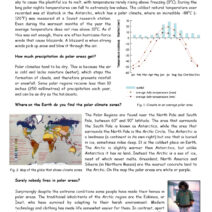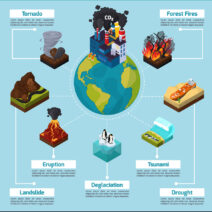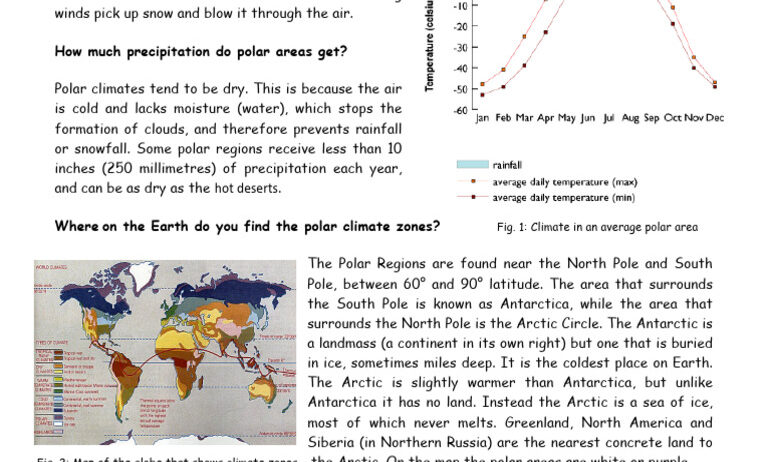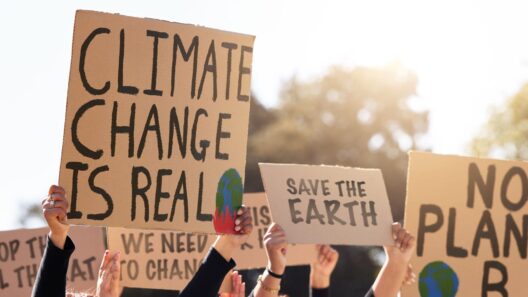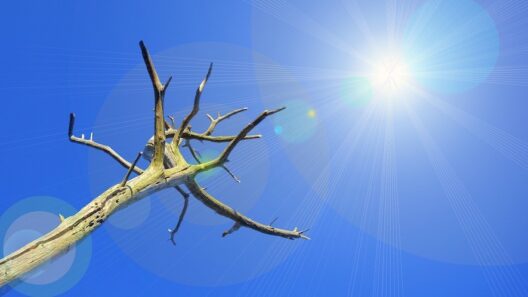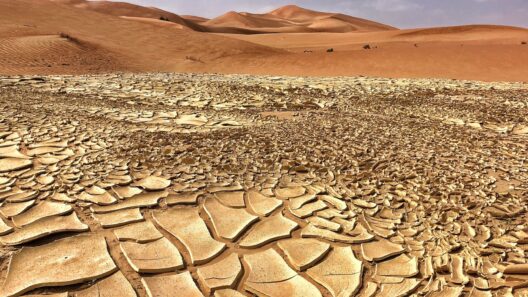The Arctic, often deemed a frozen frontier, is a realm of extremes, characterized by its enigmatic beauty and harsh conditions. Vast expanses of ice, expansive glaciers, and a kaleidoscope of wildlife thrive in this frigid environment. Examining the climate of the Arctic unveils a complex tapestry woven from frigid air masses, seasonal darkness and daylight, and the geographical nuances that dictate its unique weather patterns.
The Arctic is predominantly defined by its polar climate, characterized by long, harsh winters and short, cool summers. The temperature variations here are staggering, with winter temperatures plummeting to an inhospitable -40 degrees Fahrenheit or lower in some regions. This is poignantly contrasted by the fleeting summer months, where temperatures may rise to a mild 32 degrees Fahrenheit, albeit briefly. The dichotomy of such extremes underpins the region’s unique allure, where one can witness the artful dance of nature from frigid desolation to fleeting warmth.
Geographically, the Arctic extends beyond just the North Pole; it encompasses parts of Alaska, Canada, Greenland, Norway, Sweden, Finland, and Russia. The Arctic Ocean, bordered by these nations, is both a barrier and a corridor, facilitating the movement of cold air and creating specific microclimates that contribute to the region’s atmospheric complexity. Coastal areas can experience slightly milder conditions compared to the interior landscapes, where the barren tundra lies as a testament to a climate that is both unforgiving and fascinating.
The atmospheric conditions in the Arctic are heavily influenced by the polar vortex, a large area of low pressure and cold air surrounding the Earth’s poles. While this phenomenon is a norm, climate change has disrupted its stability, leading to erratic weather patterns that bring an unpredictable edge to the Arctic climate. As the polar vortex weakens, cold Arctic air can spill southward, creating anomalous weather conditions that ripple through lower latitudes, affecting the climate as far south as the continental United States. This interplay of atmospheric dynamics illustrates how the Arctic serves as a barometer for climate stability worldwide.
During the long Arctic winter, the landscape becomes a vast ocean of white, punctuated by the ethereal glow of the auroras. In this bleak yet mesmerizing environment, wildlife adapts to the stark reality of life. Creatures such as polar bears, seals, and Arctic foxes have evolved remarkable skills to thrive amidst this cold tableau. They embody resilience, their existence intertwined with the ceaseless rhythms of their icy habitat. Their survival serves as both a symbol and a reminder of the harsh realities of climate adaptation.
These animals are not just survivors; they are interwoven into the very fabric of the Arctic ecosystem. The sea ice that creates a platform for seals, which in turn are the prey for polar bears, illustrates the delicate interdependence found within these frozen territories. Disruption in one species can echo throughout the ecosystem, triggering a cascade of change that threatens the entirety of the Arctic biome. As climate change continues to reduce sea ice, the intricate web of life that has flourished for millennia faces unprecedented challenges.
The Arctic summer offers a starkly different narrative. The sun lingers on the horizon, casting a surreal, almost dreamlike quality to the landscape. This period of continuous daylight, known as the midnight sun, allows for brief bursts of vibrant life. The tundra awakens, flowers bloom, and migratory birds return, transforming the previously dormant region into a bustling hub of activity. However, this grace period is rapidly contracting due to rising temperatures, which not only threaten the fauna but also usher in worrisome alterations like thawing permafrost.
Permafrost, the frozen soil that has remained at or below 32 degrees Fahrenheit for two consecutive years, is a significant component of the Arctic environment, functioning as a carbon sink. For years, it held vast reserves of carbon dioxide and methane, gases that play a crucial role in regulating the global climate. As temperatures rise, permafrost thaws, releasing these greenhouse gases into the atmosphere, further exacerbating the cycle of climate change. This alarming cycle underscores the importance of the Arctic not only as a unique biome but also as a critical player in global climate regulation.
The Arctic’s beauty is undeniable, yet the threats it faces are dire and complex. Melting ice caps, retreating glaciers, and altered habitat conditions are manifestations of a rapidly changing climate. The region serves not only as a poignant reminder of the impact of human activity on the planet but also as a call to action. Preserving the Arctic involves understanding its intrinsic value, unique ecosystems, and the repercussions of its transformation.
In conclusion, the Arctic remains a captivating but precarious frontier. Its climate instills awe, drawing connections between the extreme beauty of the landscape and the fragility of its ecosystems. As the globe continues to grapple with climate change, the fate of the Arctic will undoubtedly inform our understanding of environmental stewardship and sustainability. To safeguard this frozen wonder is to recognize our shared responsibility toward the planet, ensuring that future generations inherit not only a legacy of glaciers and polar lights but also a commitment to protect these delicate polar extremes.
